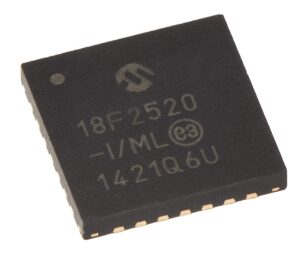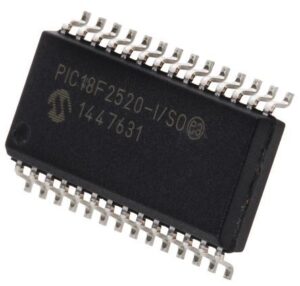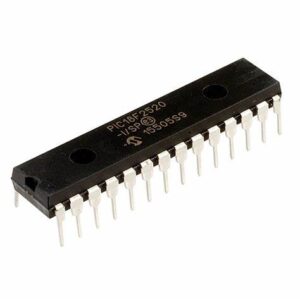Break Microchip PIC18F2520 Microprocessor Flash Memory and retrieve PIC MCU PIC18F2520 program from embedded memory, in the format of binary or heximal, after that engineer can start to reverse engineering printed wiring board on which the PIC18F2520 mounted;

Break Microchip PIC18F2520 Microprocessor Flash Memory and retrieve PIC MCU PIC18F2520 program from embedded memory, in the format of binary or heximal, after that engineer can start to reverse engineering printed wiring board on which the PIC18F2520 mounted;
The External Resistor-Capacitor (RC) modes support the use of an external RC circuit. This allows the designer maximum flexibility in frequency choice while keeping costs to a minimum when clock accuracy is not required. There are two modes, RC and RCIO. In RC mode, the RC circuit connects to the OSC1 pin. The OSC2/CLKOUT pin outputs the RC oscillator frequency divided by 4. This signal may be used to provide a clock for external circuitry, synchronization, calibration, test or other application requirements. Figure 3-5 shows the RC mode connections.
In RCIO mode, the RC circuit is connected to the OSC1 pin. The OSC2 pin becomes an additional general purpose I/O pin. The I/O pin becomes bit 4 of PORTA (RA4). Figure 3-6 shows the RCIO mode connections to clone electronic pcb board gerber file. The RC oscillator frequency is a function of the supply voltage, the resistor (REXT) and capacitor (CEXT) values and the operating temperature. Other factors affecting the oscillator frequency are:

Microchip PIC18F2520 보안 마이크로프로세서 판독 보호 및 플래시 메모리 프로그램 또는 eeprom 메모리 데이터를 추출하고 임베디드 메모리에서 잠긴 MCU PIC18F2520 펌웨어를 바이너리 또는 16진수 형식으로 검색한 후 엔지니어는 PIC18F2520 암호화 마이크로컨트롤러가 장착된 인쇄 배선 기판을 리버스 엔지니어링할 수 있습니다.
threshold voltage variation
component tolerances
packaging variations in capacitance
The user also needs to take into account variation due to tolerance of external RC components used.
The PIC16F688 has two independent, internal oscillators that can be configured or selected as the system clock source.
The HFINTOSC (High-Frequency Internal Oscillator) is factory calibrated and operates at 8 The frequency of the HFINTOSC can be user adjusted ±12% via software using the OSCTUNE register (Register 3-1).
The LFINTOSC (Low-Frequency Internal Oscillator) is uncalibrated and operates at approximately 31

كسر رقاقة PIC18F2520 تأمين حماية قراءة المعالجات الدقيقة واستخراج برنامج ذاكرة فلاش أو بيانات ذاكرة eeprom واسترداد البرامج الثابتة PIC18F2520 MCU المقفلة من الذاكرة المضمنة ، في شكل ثنائي أو سداسي ، بعد أن يبدأ هذا المهندس في عكس لوحة الأسلاك المطبوعة الهندسية التي تم تركيب متحكم PIC18F2520 مشفر عليها ؛
The system clock speed can be selected via software using the Internal Oscillator Frequency Select (IRCF) bits.
The system clock can be selected between external or internal clock sources via the System Clock Selection (SCS) bit (see Section 3.5 “Clock Switching”).






